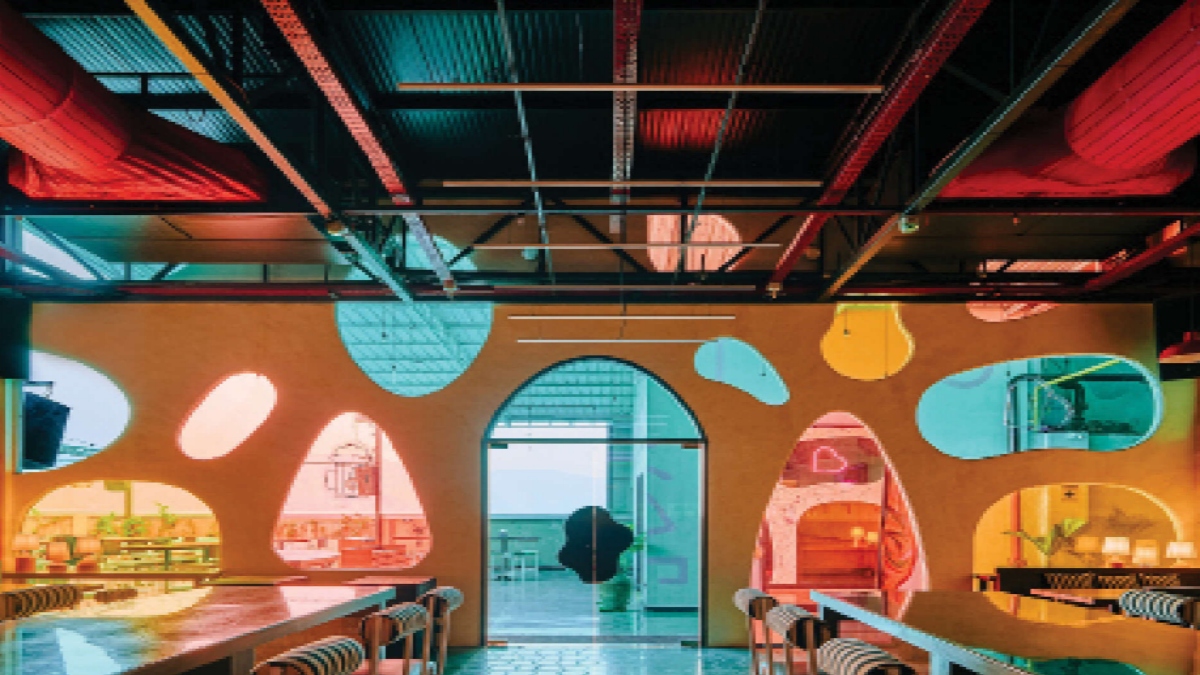


It is rare for one so young to make a mark so quickly in their chosen profession. Yet, Saniya Kantawala, Lead Designer at Saniya Kantawala Design (SKD), has managed to do so. Her interior design firm was established in 2014, and in this short period, she has completed nearly 70 projects, including popular restaurants, cafes, and bars in India and the UAE. Kantawala’s clientele includes restaurateurs and industrialists like D Y Patil, Vinod Nowal, Chief Minister Uddhav Thackeray, and his son Aditya Thackeray. This dense portfolio of hospitality, residential, retail, and commercial spaces has brought numerous national and international accolades for her. She joins The Daily Guardian for a candid chat about her practice. Excerpts from an edited interview.
 Saniya Kantawala
Saniya Kantawala BSE by Saniya Kantawala Design, SKD.
BSE by Saniya Kantawala Design, SKD.
Q. Why did you choose a career in interior design?
A. I am from a family of chartered accountants and lawyers and was studying to become a chartered accountant myself. One day, I saw a friend of mine who was studying interior design navigate through Autocad and 3Ds Max as she worked on her assignment. I was very inspired and thoroughly enjoyed how this field allowed the use of both the left and right sides of the brain. I was intrigued by this, so I began an internship with Ashiesh Shah for two years, and then I finally pursued a degree in interior design. Even as I studied design, I worked with ABIL. So, before I even began my first project, I had 4-5 years of experience that equipped me with the right skills and attitude to take on interior design as a profession.
Q. What was your brand’s initial design vision and has that vision changed over time?
A. Design is something that keeps evolving, and it is challenging for designers to define a style in a rigid manner. As we evolve as people, our sensibilities and approach to design keep evolving. My firm has a narrative-based approach to design for every project. Having said that, we are always growing as a practise and getting sharper at dealing with contractors and clients. When we began our practice, we were too naive to have a mature vision. However, with time, it has become more defined.
Q. Please tell us about your most popular projects.
A. We have worked on an array of projects. Some of the most notable ones include D.Y. Patil’s residence, measuring about 20,000 sq. ft., which is located in Worli. Another exciting project we have worked on is the ‘Oye Kake’ restaurant, where we created a space where the design eventually became the so-called ‘X factor’ of the restaurant, making it a popular destination. This project led to future collaborations as well.
Q. What have been the biggest challenges you have faced so far?
A. Our industry is structured in a way that all our work is interconnected, so if one person fails, the entire project fails. This has happened in the past, and more often than not, the blame is put on the designer, which can be quite a challenge to deal with. Our approach is to fix these shortcomings whenever they come our way.
Q. Is it easier or more difficult to focus on hospitality brands? Why did you choose to specialise in this niche?
A. We didn’t choose to specialise in the hospitality niche per se. Our path was carved out as we worked on a project and kept getting referrals from one project to the next. I enjoy working on hospitality projects for two reasons: it allows us to experiment more as there are fewer people involved, and the turnaround time is quicker as most hospitality spaces are on rent.
Q. How did the pandemic affect your design practice? Have you seen a change in people’s mindsets and their demands?
A. The pandemic worked in our favour as people started to understand the value of a well-designed home. With the fall in prices, people started buying more houses and also renovating them, and this helped the entire industry in general. Though the demand or vision of the clients for their homes hasn’t changed much, people have started looking at their homes as more than just homes—they are also offices and workout areas, among other things. Additionally, the communication we have with our clients has evolved. Before the pandemic, we would meet clients for every decision—big or small. Now, clients are open to making small decisions digitally. Therefore, we have been able to optimise communications and have been conducting work globally from our office.
Q. How do you stay true to your design aesthetic while also incorporating trends into your practice?
A. Our designs are narrative-based, and I love to approach projects by focusing on a few design elements instead of overdoing and cluttering the space. However, every client is different, and if a client prefers a maximalist space, we create that for them. We don’t blindly incorporate trends; we study trends, do market research, and integrate the learning into our design. Even though I enjoy creating spaces located in a specific period, I aspire to make every project timeless, and I strive to achieve this balance with every project.
Noor Anand Chawla pens lifestyle articles for various publications and her blog, www.nooranandchawla.com.